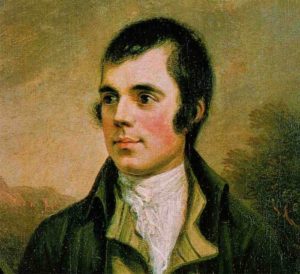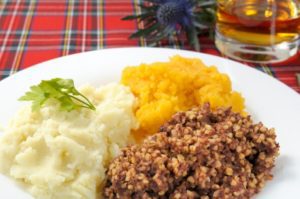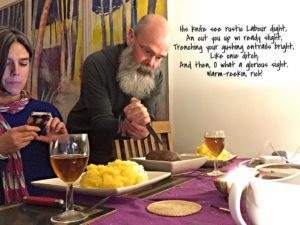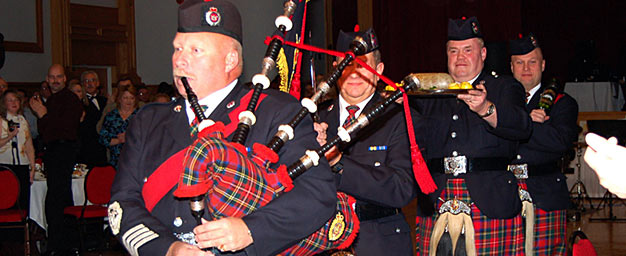Burns Night, which is observed on the evening of January 25th, is a celebration of the life and work of the Scottish Romantic poet Robert Burns (1759-1796) and of Scottish culture in general. It is widely observed in Scotland, as well as by the Protestant community in Northern Ireland and by Scots and people of Scottish descent around the world.
25th January was Burns’ birthday. The first Burns Night was held in 1801, five years after his death at the age of just 37.

But what do our cousins north of the border get up to on Burns Night? Well, by all accounts, a very good time is enjoyed by all – a good time involving plenty of haggis, bagpipes, Scotch whisky and the recitation of poems and songs.
Burns suppers may be celebrated fairly informally in people’s houses or the celebrations may be more formal and lavish. Formal Burns Night events – which are often hosted by official Burns clubs or organisations like the Freemasons – tend to follow a standard pattern.
A piper plays as the guests arrive and mingle. When everybody is present, the host says a few words to welcome people to the supper.


When everybody is seated, grace is said. This is usually the Selkirk Grace, a prayer which is associated with Burns because he is said to have delivered it at a gathering hosted by the Earl of Selkirk. The Selkirk Grace goes like this:
“Some hae meat an
canna eat,
and some wad eat that want it;
But we hae meat and we can eat,
And sae let the Lord be thankit.”
The first course is usually soup, often a Scottish variety such as Scotch broth or cock-a-leekie.


Next comes the piping in of the haggis (minced heart, liver and lungs mixed with spices and oatmeal, and traditionally boiled in a sheep’s stomach). A piper leads the way as the haggis is carried ceremonially to the table, usually by the cook. The host, or a guest, then recites Burns’ poem Address to a Haggis.
As the haggis – “The great chieftain o’ the pudding race!” – is praised, a knife is produced and sharpened, and the haggis is slit open from end-to-end. At the end of the poem, the haggis is toasted with whisky before being eaten by the guests, along with tatties (potatoes) and neeps (turnips).


The meal may include other courses – Scottish desserts such as tipsy laird (a whisky trifle), cheese with Scottish oatcakes, and coffee. All is, of course, washed down with the ‘water of life’ – Scotch whisky.
When the meal has reached the coffee stage, a number of speeches and toasts are made. The ‘immortal memory’ speech commemorates an aspect of Burns’ life or work and includes the recitation of one of his songs or poems. The immortal memory of Burns is then toasted with whisky.
Next comes the ‘address to the lassies’, a speech – often humorous – given about women by a man. One of the female guests then gets to give a ‘reply to the laddies’.
After the speeches, more of Burns’ songs and poems are performed. The evening is eventually brought to a close by everybody standing up, joining hands and singing Burns’ Auld Lang Syne.
Robert Burns, who wrote over 550 well-known poems and songs, is seen by many as Scotland’s national poet and was named the greatest Scot of all time in a 2007 survey. His focus on political and civil issues has made him an icon for Scottish socialists and liberals.
Though most Burns Night celebrations occur in private homes and clubs, many restaurants also offer Burns Night dinners. Sales of alcohol in Scotland increase by about 60% in off-licences and 20% in pubs on Burns Night.


























